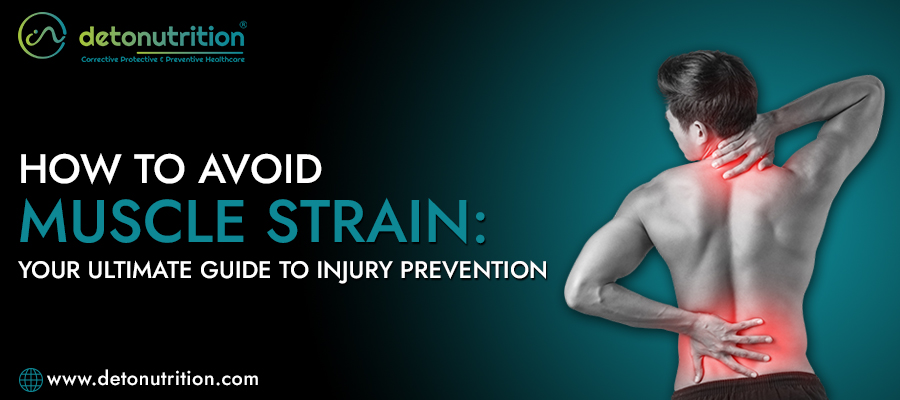How To Avoid Muscle Strain: Your Ultimate Guide To Injury Prevention
A muscle strain which is also known as pulled muscle is a type of common injury that occurs when a muscle fiber is stretched or torn due to overuse, sudden movements, or trauma. Muscle strain can happen to anyone, especially among athletes and in this blog, you can explore several ways that will help you reduce your risk of experiencing a muscle strain.
Read This Article - How To Recover From Muscle Soreness
Ways To Prevent Muscle Strain
1. Warm Up and Stretch
Warming up before doing your exercise and stretching after a workout are two of the most effective ways to prevent muscle strains. You can do gentle aerobic activities like walking or jogging to increase your blood flow to the muscles, making them more flexible and less prone to injury. Stretching helps loosen up the muscles, improves flexibility, and reduces stiffness.
2. Use Proper Technique and Equipment
Using the correct form when exercising, playing sports or doing any other work is crucial to avoid muscle strain. Not using proper technique can put excess strain on the muscles. Additionally, wearing appropriate, well-fitted clothes and shoes with good cushioning and support can help prevent injuries.
3. Gradually Increase Intensity
If you're starting a new exercise program or returning after a break, then it’s crucial to gradually build up the duration and intensity over time. Doing an intense workout after a long break can shock your muscles and lead to strains. So take time in order to allow your muscles to adapt to the new workout routine.
4. Allow for Rest and Recovery
Muscle overuse is a main cause contributing to muscle strains, highlighting the importance of incorporating adequate rest days between workouts to facilitate muscle recovery. Engaging in intense physical activity without allowing sufficient time for recovery can lead to fatigue and increased susceptibility to injuries. Therefore, it is crucial to avoid exercising the same muscle groups on consecutive days, as this can exacerbate strain and hinder the healing process. Prioritizing rest, varying your workout routine, and listening to your body can significantly enhance your overall fitness and well-being while minimizing the risk of muscle strains.
5. Strengthen Muscles
Weak muscles are more susceptible to strains. Incorporate strength training into your routine at least twice a week to build muscle resilience and reduce injury risk. Activities like weight lifting, yoga, and cycling are great options to strengthen your muscles.
6. Practice Good Posture
Maintaining proper posture, whether sitting or standing is essential for reducing muscle strain and promoting overall musculoskeletal health. When sitting at a desk, ensure your back is supported by the chair, knees are at a 90-degree angle with feet flat on the floor, and your computer monitor is at eye level to prevent neck strain. In standing posture, keep your back straight, engage your abdominal muscles, and distribute your weight evenly on both feet. By practicing good posture, you can reduce muscle fatigue, improve blood circulation, enhance respiratory function, and decrease the risk of musculoskeletal disorders, ultimately leading to a better quality of life.
Read This Article - EAA Boosttt - Best Pre And Post Workout Drink In Refreshing Flavors
7. Maintain a Healthy Weight
Excess weight or obesity, especially around the belly can put added stress on the muscles, particularly in the back and legs. Maintaining a healthy weight through a balanced diet and regular exercise along with organic fat loss supplements helps reduce strain on the muscles.
Conclusion: How To Avoid Muscle Strain?
By incorporating these prevention strategies into your lifestyle, you can significantly reduce your risk of experiencing a painful and debilitating muscle strain. However, if you do sustain an injury, be sure to follow the RICE method which is rest, ice, compression, elevation and seek medical attention if symptoms persist or worsen.





